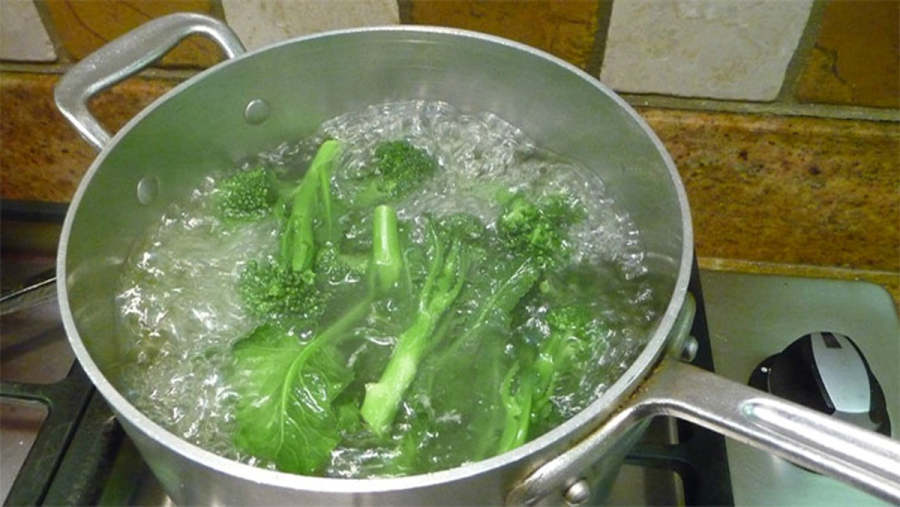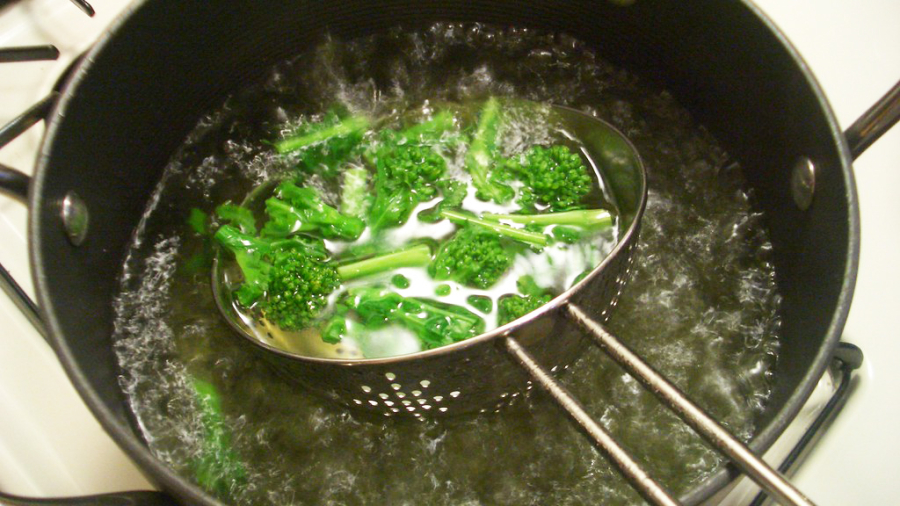Boiled vegetables may seem like a simple dish, but not everyone knows how to cook them properly so they are tender and crispy like in restaurants. Let’s take a look!
Add oil to the boiling water

When boiling vegetables, you can add a little bit of oil to the water. The oil will create a thin layer on the outside, making your vegetables greener and shinier.
At the same time, the oil layer can also help the vegetables stay green for longer without changing color. However, the boiling water will have some oil residue, so it can be used or not depending on your family’s taste.
Use lemon or vinegar
Another way is to squeeze a few drops of lemon, or a few drops of vinegar into the boiling water. This not only preserves the original color of the vegetables, but also does not alter the original taste. This method can be applied to cabbage, carrots, etc.

Soak the vegetables in ice water after boiling
After boiling the vegetables, you can take them out and put them in a bowl of water with some ice cubes in it. The sudden temperature change not only makes the vegetables have a beautiful green color, but also helps retain the vitamins in the vegetables. Moreover, the ice water can keep the vegetables crispy when eating.
Wait for the boiling water before adding the vegetables
You should wait for the water to boil before adding the vegetables, because many vitamins are lost and dissolved immediately after the vegetables are put into the water. Therefore, when the water is boiling, put the vegetables in, so that they are not immersed in water for too long, which would cause loss of nutrients.

Add salt to the boiling water



































